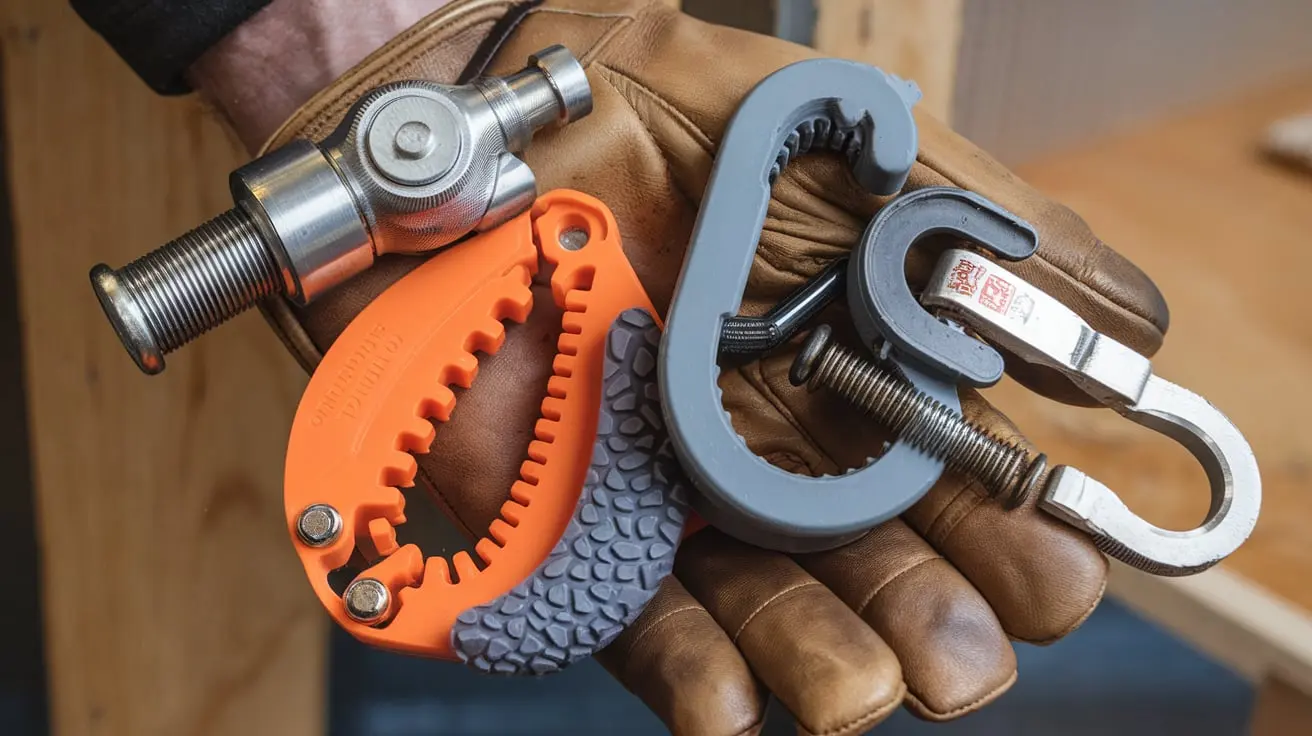Gripping gadgets are essential tools designed to enhance comfort, efficiency, and safety in handling objects. Whether for personal use, office tasks, or outdoor adventures, choosing the right gripping gadget is crucial. With so many options available, it can be overwhelming to select the one that best fits your specific needs. In this guide, we’ll explore how to choose the best gripping gadget for your requirements.
Understand the Purpose of the Gripping Gadget
The first step in choosing a gripping gadget is to define your needs. Are you looking for a gadget to help with mobility, assist with lifting heavy objects, or enhance your grip for a specific task? The purpose of the gripping gadget will determine the features you need.
- For arthritis relief: You might need a gadget designed to reduce strain on the hands, such as an ergonomic tool with soft, padded grips.
- For heavy lifting: A gadget with strong clamping or grabbing power is essential. You may need a device designed to lift, carry, or grip large or awkwardly shaped objects.
- For precision tasks: If you’re working with small items, like screws or bolts, a gadget with a fine tip or precision grip would be ideal.
Consider the Type of Grip
Gripping gadgets come in various designs, and the type of grip is an important factor to consider. Different tasks require different types of grips.
- Ergonomic grips: These are designed to reduce strain on the hands and wrists. Ergonomic handles are often padded or shaped to fit the natural contours of your hand, providing a more comfortable and secure hold.
- Rubber grips: Rubber offers a non-slip surface, making it easier to handle objects securely. This material is commonly found in gadgets that require a strong grip for safety and precision.
- Soft-touch grips: These are made of a softer material that is easy on the hands, ideal for long-term use, or people with sensitive skin.
- Textured grips: These grips provide extra traction, making them suitable for wet or slippery environments.
Think About the Weight of the Gadget
The weight of the gripping gadget is another important factor. A gadget that is too heavy may be difficult to use for extended periods, while one that is too light may lack the strength needed for some tasks. Choose a gadget that balances weight and power.
- For precision tasks: Lighter gadgets are often preferred for their ease of use, especially for delicate tasks like picking up small objects or working in tight spaces.
- For heavy lifting: You may need a gadget with a bit more weight to ensure it can handle larger items. However, ensure the gadget is still manageable and doesn’t cause hand fatigue.
Check the Material of the Gripping Gadget
The material of the gadget affects its durability, strength, and overall performance. There are a few key materials used in making gripping gadgets:
- Steel and metal: These materials are commonly used for heavy-duty gripping tools because they provide strength and long-lasting durability. If you need a gripping gadget for lifting heavy objects or for industrial use, metal is the best option.
- Plastic: Lightweight and cost-effective, plastic gripping gadgets are suitable for light to medium tasks. They may not offer the same strength as metal, but they are often sufficient for everyday use.
- Aluminum: A great compromise between metal and plastic, aluminum is lightweight but strong, making it ideal for portable gripping gadgets.
- Rubber and silicone: Often used for grips and handles, rubber and silicone are flexible, non-slip materials that provide comfort and support.
Think About the Size and Portability
When selecting a gripping gadget, consider its size and portability. The gadget should be easy to carry and store, especially if you plan on using it for outdoor activities or work that requires mobility. Some gadgets come in compact designs, while others may be bulkier.
- Portable gadgets: Look for lightweight and foldable gadgets that you can easily store in a toolbox, bag, or glove compartment.
- Compact designs: A small, compact gripping tool may be suitable for everyday use at home, such as in the kitchen or garage.
- Heavy-duty gadgets: If you need a larger gripping tool for industrial or construction purposes, choose a model that is designed for robustness and performance, even if it is bulkier.
Durability and Maintenance
Durability is a crucial consideration, especially for gadgets that will be used frequently. You’ll want a gripping gadget that can withstand wear and tear over time. Look for tools that are built to last, with sturdy construction and rust-resistant materials.
- Rust-resistant materials: Gadgets made from stainless steel or plastic are resistant to rust and corrosion, which makes them ideal for use in damp or wet environments.
- Easy maintenance: Some gripping gadgets require regular maintenance, such as cleaning or oiling. Look for gadgets that are easy to maintain, especially if you plan on using them frequently.
Determine the Grip Strength
Grip strength is a critical factor, especially when using a gripping gadget for more demanding tasks. The tool should have enough gripping power to hold onto objects securely but not too much to cause damage. Look for gadgets that offer adjustable grip strength.
- For precision tasks: A gadget with a light grip strength, such as a tweezer or clamp, might be sufficient for handling delicate or small items.
- For heavy-duty use: If you’re lifting large objects or handling industrial tasks, look for gadgets with a stronger grip. Some models offer adjustable tension or grip strength, allowing you to control the force applied.
Budget Considerations
The price of gripping gadgets varies based on their materials, features, and intended use. Set a budget based on how often you plan to use the gadget and what kind of tasks you need it for.
- Budget-friendly gadgets: Basic models made from plastic or lightweight materials are typically less expensive, but they may lack the durability and strength needed for heavy-duty tasks.
- Premium gadgets: High-end gadgets made from metal or with advanced features tend to be more expensive but are often built to last longer and perform better.
Research Customer Reviews
Before purchasing a gripping gadget, research customer reviews and feedback. Reviews can provide insight into the gadget’s performance, comfort, durability, and usability. Look for gadgets that have received positive ratings for the specific tasks you need them for.
- Read user experiences: Find out how others have used the gadget and what they liked or disliked about it. Look for feedback on grip strength, ease of use, and comfort.
- Check product comparisons: Some websites and stores offer comparisons of similar gadgets, which can help you determine which one is right for you.
Test the Gadget Before Purchase
Whenever possible, test the gadget before making a purchase. This allows you to get a feel for the grip, weight, and overall comfort of the gadget. If you’re buying online, check the return policy to ensure that you can exchange the gadget if it doesn’t meet your expectations.
- Test for comfort: Make sure the gadget fits comfortably in your hand and doesn’t strain your fingers or wrists.
- Test for functionality: Try the gadget out on objects similar to what you’ll be handling to ensure it has the right grip strength and stability.
Conclusion
Choosing the best gripping gadget requires careful consideration of your specific needs and preferences. Whether you need a gadget for precision tasks, heavy lifting, or everyday use, understanding the type of grip, material, size, and durability is key. By keeping these factors in mind and doing thorough research, you can find the perfect gripping gadget to meet your needs, making tasks easier, safer, and more efficient.

